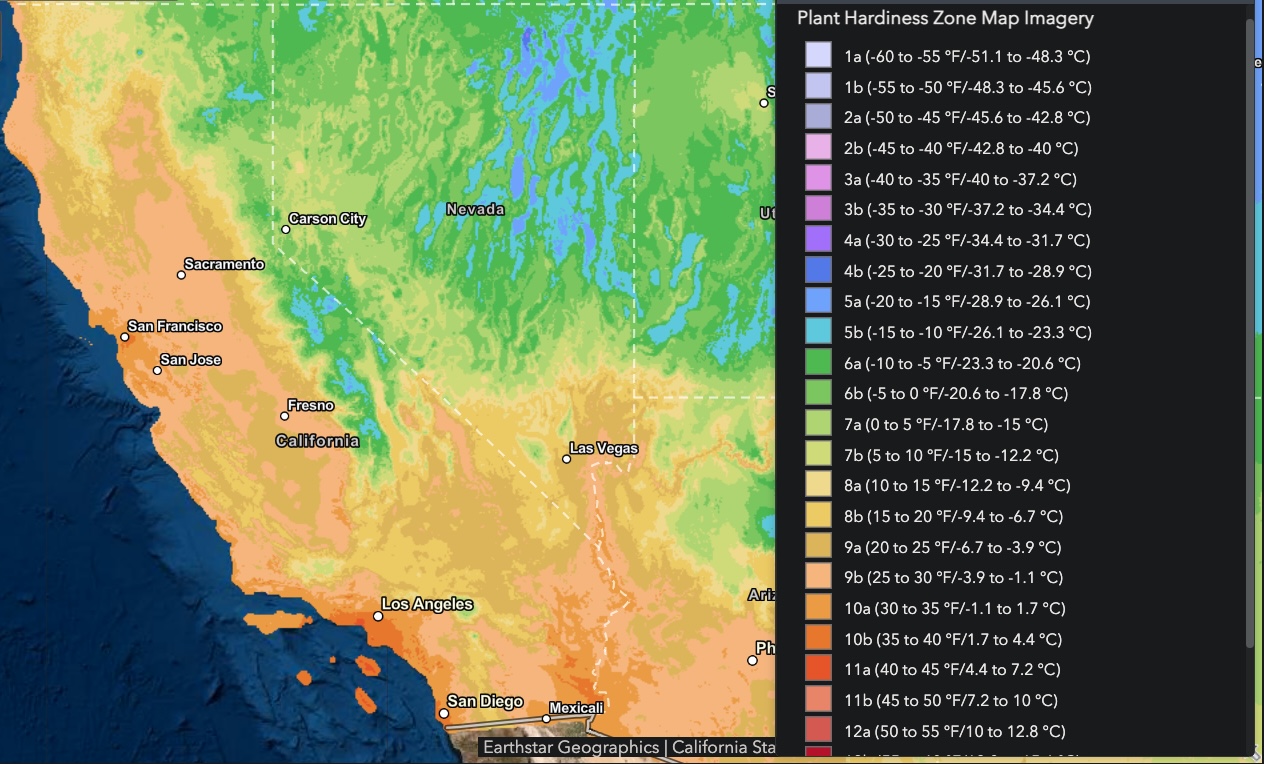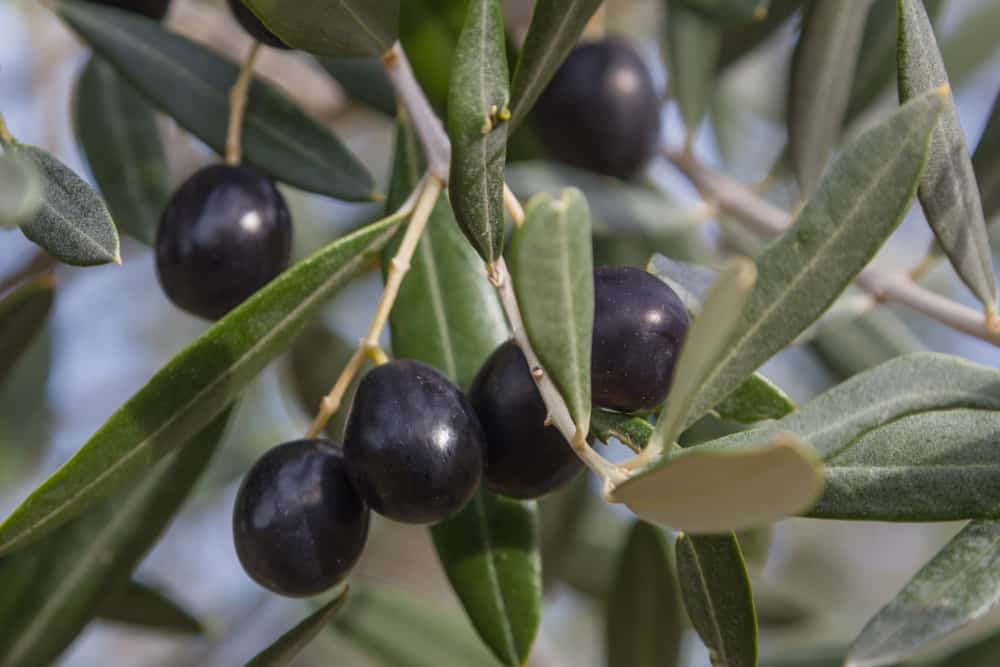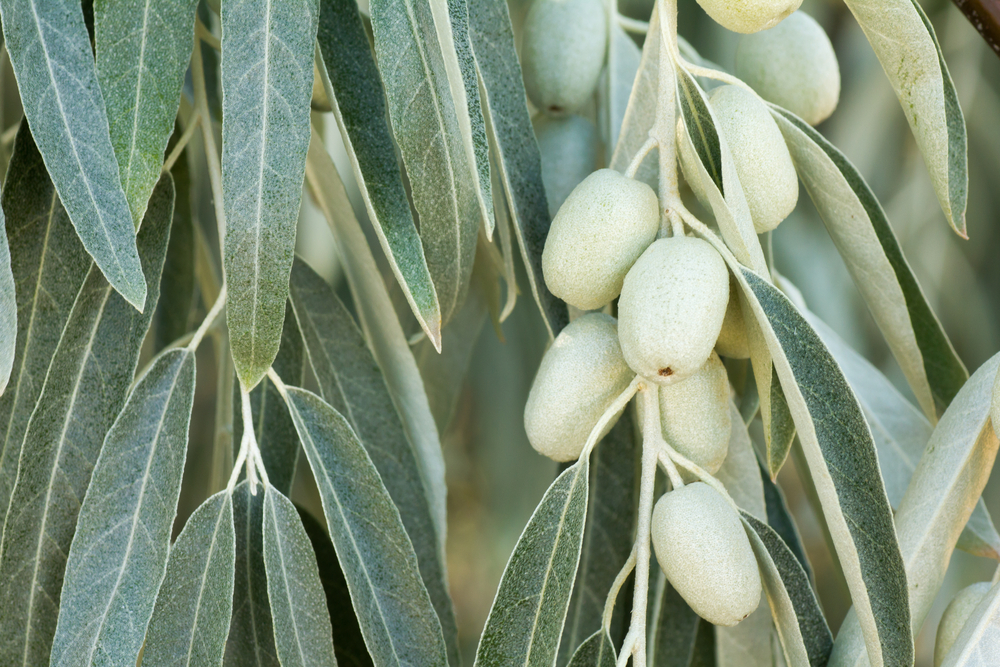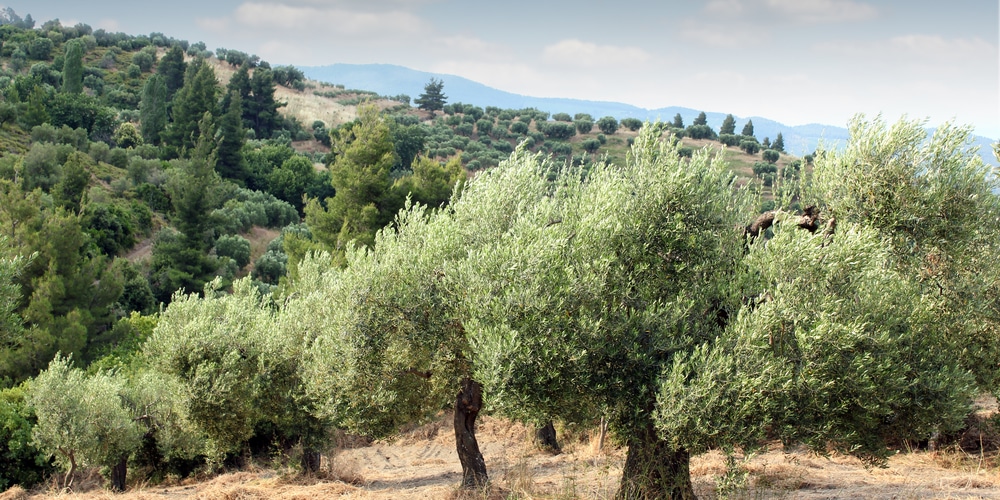Olive trees are beautiful, adaptable evergreen plants native to the Mediterranean. They are cold hardy, drought tolerant trees that are relatively easy to care for, especially in California.

Wide varieties of olive trees in California can be grown for landscaping or harvesting purposes. They generally have short trunks and a widespread crown of dark green and silvery foliage that looks stunning in California gardens. They also make lovely additions alongside driveways and as ornamental shade trees in backyards.
Can Olive Trees Grow in California?
Olive trees grow well in California due to the similarities between the Californian and Mediterranean climates. These trees prefer temperate coastal climates with hot, dry summers, low humidity, and cool winters. Because of this, olive trees grow best in the coastal areas of California.
From a production standpoint, olive trees in California are primarily grown in the Sacramento and San Joaquin valleys. However, they do well in most areas of the state. In total, there are over 39,000 acres of olive trees grown throughout California.
What Types of Olive Trees Can Grow in California?
There are roughly 139 olive cultivars grown around the world, each with its look, flavor, cultivation, and harvesting techniques. There are hundreds of different olive tree types as well.
In California, some of the most widely grown olive trees are the Sevillano, Arbequina, Maurino, and Mission.
Sevillano Olive Trees
The shrubby Sevillano olive tree was first brought to California by Spanish missionaries in the 18th century. This type of olive tree is still grown today in the Sacramento Valley.
In California, the Sevillano olive tree thrives in USDA Zone 9, although it also does well in Zones 10 and 11. It requires full sun, alkaline soil, and minimal water once established.
This olive tree can reach around 30 feet tall when grown under the right conditions. They have gnarled trunks and willowy canopies made up of dark green leaves. The olives they produce are large and black. These fruits have a lower oil content than other olive tree varieties but are excellent for canning.
Arbequina Olive Trees
One of California’s most popular and widely grown olive trees is the Arbequina olive tree. It is an ornamental evergreen with silvery-green, lance-shaped foliage and fragrant white flowers. It produces early-season, meaty, black olives with small pits with high oil content.
This olive tree requires alkaline, well-draining soil and a minimum of six hours of direct sunlight. In California, the tree thrives in Zones 8-10 outdoors. When grown in a pot as a patio plant or as an indoor houseplant, it can withstand the temperatures in Zones 4-7. Once temperatures drop below 22 degrees Fahrenheit in these zones, bring the pots inside to avoid damaging the foliage.
Mission Olive Trees
Mission olive trees produce one of California’s most popular olive varieties. This ornamental cultivar was also brought to California by Spanish monks in the 18th century. However, it is currently listed by the International Olive Council as the only American olive cultivar.
It is a hardy, full-sun tree that prefers well-draining, nutrient-poor soil. It does best in USDA Zone 9B, which makes up the majority of the northern and central parts of California.
Mission olive trees have a high resistance to cold, greater than any other tree variety grown in California. It has a knobby, gray trunk with willowy branches and pointed, silvery foliage. Its olives are good for table use and create buttery, cold-pressed olive oil.
Maurino Olive Trees
The Maurino olive tree is native to Tuscany but grows well in USDA Zone 9. Like other olive trees grown in California, this variety does not require fertile soil or excessive watering to thrive. Instead, it prefers 6-7 hours of direct, unfiltered sunlight and dry, hot summers to produce fruit.
The Maurino is a lovely, compact tree with pendulous branch forms and gray-green leaves. They produce a high volume of small fruits. These aromatic olives are sweet and primarily used to make olive oil.
Leccino Olive Trees
Leccino olive trees are a cold-hardy variety grown in Zones 8-11 in California. It is grown as both a bumper crop and a landscaping plant. This Italian-native variety is one of the world’s oldest varieties, with mentions in written texts from the Middle Ages.
This olive tree is a fast grower that, when grown alongside a pollinating variety, produces green and purplish-black olives. The oil they make has a pleasant and mildly fruity flavor.
Final Thoughts
Olive trees love the climate and growing conditions present in the state of California. From San Joaquin to Sacramento, the state’s generally high temperatures, dry air, and well-draining soil are ideal conditions for olive trees of all kinds to thrive as long as they are cared for correctly.



